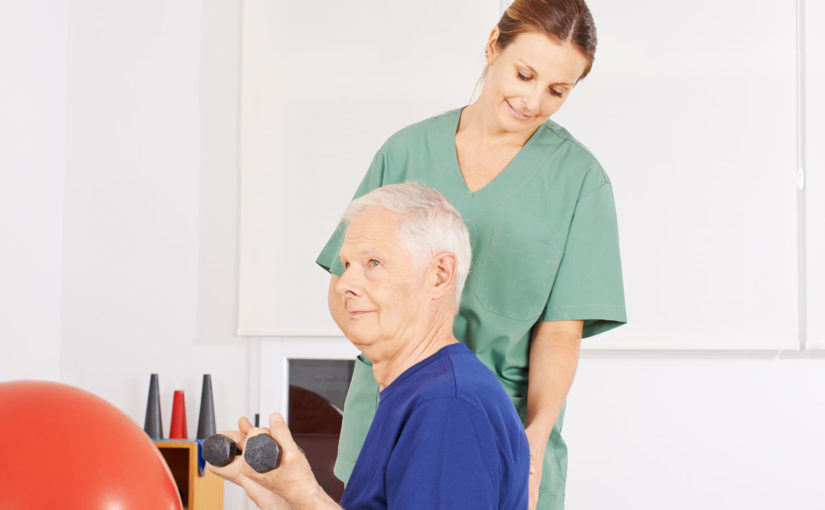
For elderly people recuperating from injuries or suffering with persistent pain, PT (physical therapy) helps to reduce discomfort and repair physical functionality like mobility, power, stability, and dexterity.
PT for Senior Citizens
PT includes stretches, walking, therapeutic massage, water therapy, and tens treatment, to name a few. The purpose of PT for senior citizens is to simplify everyday chores and pursuits to make them as self-sustaining as they can be. Physiotherapy may benefit people with arthritis, diabetes, Parkinson’s, Alzheimer’s, strokes, both general and localized pain, and more.
Physical Therapists
A physical therapist uses a combination of several different therapies to enhance an individual’s range of motion, minimize pain, and bring back functionality.
The initial objective is decreasing pain and/or inflammation if it exists. Next, the therapist applies different treatments to improve leverage, energy, balance, and coordination. These approaches often include physical exercise like stretches, weightlifting, and walking. A PT may also implement a variety of other techniques to determine which ones work and which don’t.
Kinds of Physical Therapy
- Physiotherapy is treatment conducted directly by a therapist in order to calm the person, minimize pain, and provide greater flexibility. This consists of:
- Kneading muscle and other soft tissue to soothe the person, boost blood flow, and reduce pain. Manipulation uses gradual motion to shift, pull, and align bones and skeletal muscles. Doing this helps to release trigger points and improve mobility. Adjustments use quick, strong motions to bring pain relief and reposition joints and muscles.
- Cold therapy works to reduce pain and soreness from ailments like osteoarthritis. It combines ice compresses/rub downs with rest and elevation.
- Heat therapy loosens muscle knots and increases blood flow, which in turn relaxes rigid joints caused by arthritis and other ailments. Heat also helps to relax muscles prior to working out.
- Water therapy treats conditions with water in order to sustain health, repair damaged tissue, enhance circulation, and calm the whole body.
- TENS therapy uses a current of electricity to disguise pain signals and tone muscles in stroke and arthritis sufferers. It is frequently also combined with cold light therapies for improved healing.
- Ultrasound therapy employs high-frequency sound waves to minimize muscle cramps and soothe the muscle tissue prior to and following exercise.
Physical therapists coach clients during each visit. Clients are instructed on the best ways to accomplish everyday chores, guard against further damage, and carry out workout routines in the home.
Targeting Different Ailments with Physical Therapy
Health experts are discovering that physical rehabilitation assists people with various illnesses and health problems, some more noticeable than others:
- A lot of people in their mid-60s and above have joint disease in their spinal columns, even without displaying any symptoms. Physiotherapy helps to delay potential symptoms through the use of water workouts, heat packs, TENS therapy, and other treatments.
- For clients who have had strokes, physical therapists use restricted motion therapies, where the stronger limb is restrained while the weaker limb is forced to be active. Visual imagery entails practicing motions without really performing them. This strengthens the brain area that directs body movement.
- Parkinson’s disease sufferers do exercises that increase dorsal range of motion to prevent the mechanical motions the illness causes.
- People with incontinence are trained to use their pelvic and bladder muscles properly. Performing pelvic routines fortifies the musculature that regulates the bladder.
- Physical therapists treat Alzheimer’s sufferers with exercise, which helps boost memory and delay the development of severe memory deficits. They like to use the “mirror” technique as well, in which the therapist acts as a mirror and shows the client the right way to move. Some other therapies are dancing and horticulture, which can help people to recall particular kinds of movements.
- COPD is treated with physical exercise routines which can reduce breathing symptoms by working out muscles and improving cardiovascular health.
Conclusion
Physiotherapy is useful for elderly people in all states of physical health. If you’ve recently undergone a surgical procedure or are coping with an illness, consult with your health practitioner about physiotherapy. Physiotherapy can restore your self-sufficiency by improving your range of motion and simplifying everyday tasks.
- What Causes Pain? New Research Weighs In
- The Benefits of Cosmetic Acupuncture
- Noninvasive Pain Management Techniques
- Acupuncture: 5 Reasons Why It's Right for You
- Why Medical Acupuncture Is So Beneficial
- The Top 10 Things You Did Not Know About Physical Therapy
- FIVE WAYS A PHYSIOTHERAPIST CAN HELP PREVENT FALLS
- 7 Surprising Myths About Physical Therapy
- The Evolution of Physical Therapy
- 9 Health Secrets from Physical Therapists
- How can acupuncture help with my specific health ailment?